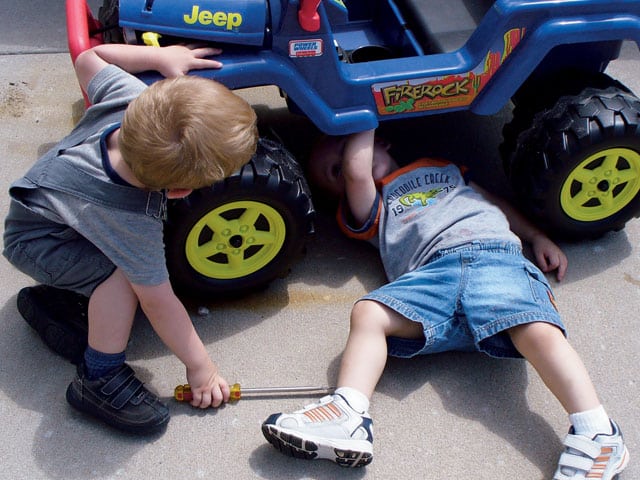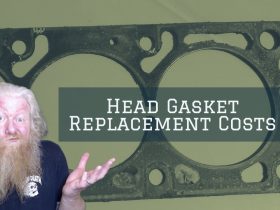The most common pulleys on your engine are what are referred to as “accessory” pulleys, those responsible for converting the turning of a belt into energy used to power engine accessories such as a power steering pump, air conditioning pump, alternator, and so forth. These pulleys will be turned by a “serpentine” or “accessory” belt. There may be one, two or even more on the front of the engine. All are powered by the crank shaft pulley (usually located at the bottom of the engine).
Driver and Driven
The crankshaft pulley is your “primary” or “driver” pulley. The other pulleys on the accessories connected to that driver pulley are the “driven” pulleys. The size of the pulleys on the system determine how fast or slow they turn in relation to the engine’s turn.
Serpentine and V-Groove
 The belts being turned and turning all of this are usually of either the Serpentine type or the V-Groove type.
The belts being turned and turning all of this are usually of either the Serpentine type or the V-Groove type.
A serpentine belt has several V-shaped grooves in it creating teeth along the belt’s driving surface (it will be flat on top). A V-Groove belt is simple a V-shaped belt that is flat on top and triangular in shape to its bottom.
There are different pulley shapes to match either a serpentine or a V-Groove belt. Which is used will depend on manufacturer preference, the type of accessories to be turned, and the amount of grip required to keep the belt from slipping.
Calculating Pulley Speeds
To calculate how fast or slow an accessory pulley is being driven, a simple calculation that compares the driver pulley with the driven pulley yields the relative RPM rate for the turn.
For example, if a driver pulley is 6-5/8 inches in diameter and is turning at 1,000 RPM, then a 7-inch accessory pulley will be turning at 946 RPM and a 2-1/2-inch driven pulley will be turning at 2,650 RPM.
The calculation is done as the diameter of the driver pulley divided by the diameter of the driven pulley times the RPM speed: (Driver Diameter / Driven Diamter) * RPM. Hence a 5-inch crankshaft pulley turns a 7-inch water pump pulley at .714 its rate of speed (ala 1,000 RPM on the driver means 714 RPM on the driven).
Changing Ratios
 One thing many tuners do and that some manufacturers are also doing to improve horsepower by removing the power loss associated with the accessories on the engine is to “under drive” the pulleys by adding larger pulleys to the driven accessories or reducing the diameter of the crankshaft pulley driving them.
One thing many tuners do and that some manufacturers are also doing to improve horsepower by removing the power loss associated with the accessories on the engine is to “under drive” the pulleys by adding larger pulleys to the driven accessories or reducing the diameter of the crankshaft pulley driving them.
We don’t recommend that home mechanics make changes like this to their engine and its accessory system without first fully understanding the manufacturer’s intent and the limits of their accessories and crankshaft output. Changing pulleys on the crankshaft or the individual accessories on an engine could cause balance changes or reduce the capability or longevity of engine components.
Other Pulley Types
Other “dead” pulleys on an engine may be there to add tension or create a “curve” or “turn” in the belt so it can better reach another accessory. These are often referred to as “idler” or “tensioner” pulleys. They serve no function other than to redirect the belt or keep it under proper tension.







